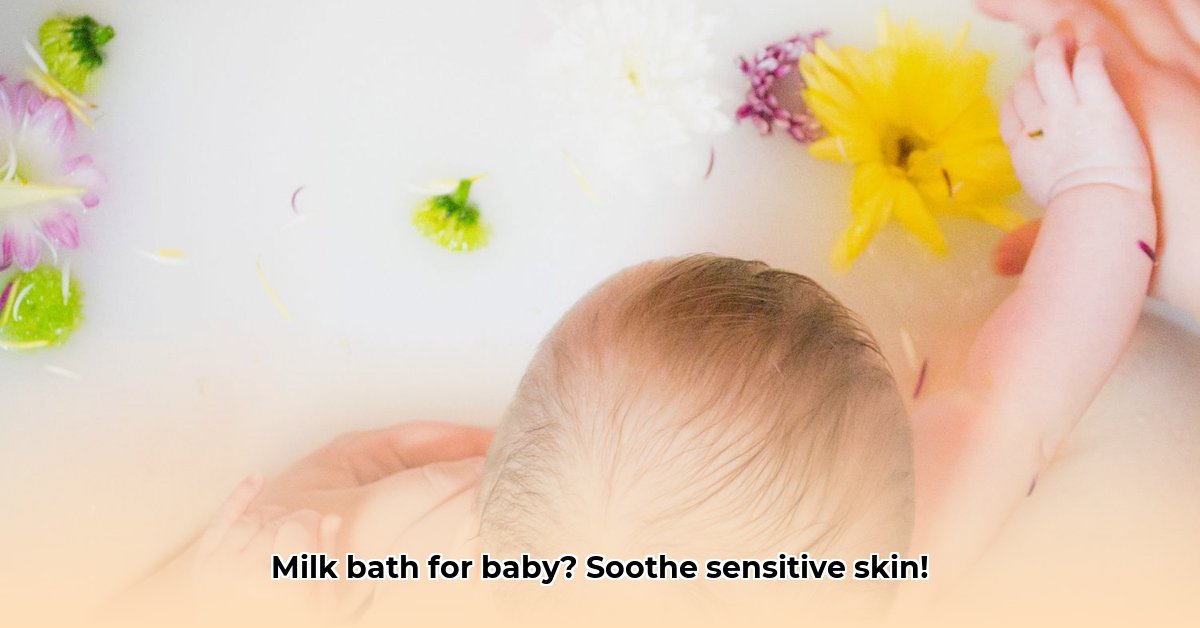
Many parents explore breast milk baths as a natural way to soothe their baby's skin. While anecdotal evidence suggests potential benefits, robust scientific backing remains limited. This article provides a balanced view, outlining potential advantages, offering a step-by-step guide, and emphasizing crucial safety precautions.
Benefits and Evidence: What We Know (and Don't Know)
Breast milk contains beneficial components like fatty acids (oleic, palmitic, and linoleic acid), antibodies (particularly IgA), and growth factors (such as EGF). These could offer moisturizing, antimicrobial, and wound-healing properties for delicate infant skin. Some parents report success in soothing diaper rash and eczema with milk baths. However, rigorous scientific research is lacking to definitively confirm these benefits. Larger, controlled studies are needed to establish efficacy. Therefore, consider milk baths a potentially helpful complementary therapy, not a guaranteed cure.
How-to Guide: Preparing and Administering a Breast Milk Bath
Giving your baby a milk bath involves careful preparation and hygiene:
1. Milk Source and Preparation: Use freshly expressed breast milk. Avoid using previously frozen or refrigerated milk due to increased bacterial risk.
2. Milk Quantity: There's no standardized amount. Start with a small quantity (1/4 to 1 cup), aiming for a slightly milky appearance in the bathwater. Add more gradually if needed but avoid excessive milk.
3. Bath Temperature and Duration: Fill the tub with lukewarm water (around 90-98°F), testing it on your wrist. Add the milk to the running water. Limit bath time to 5-10 minutes.
4. Post-Bath Care: Gently pat your baby dry with a soft towel. Apply a fragrance-free moisturizer if needed.
5. Monitoring for Reactions: Carefully observe your baby's skin for any redness, irritation, or rash. Discontinue milk baths immediately if any adverse reactions occur and consult your pediatrician.
Considerations and Precautions: Prioritizing Safety
Before considering milk baths, several key factors warrant consideration:
- Mother's Milk Supply: Milk baths might impact breast milk supply. Discuss this with your doctor, especially if you're breastfeeding or pumping.
- Bacterial Contamination: The risk of bacterial contamination increases with improperly stored milk. Always use fresh milk and maintain impeccable hygiene.
- Consultation with Healthcare Providers: Before using milk baths, particularly for babies with skin conditions, consult a pediatrician or dermatologist. They can assess your baby's specific needs and offer personalized advice.
- Alternatives: Milk baths shouldn't replace medically recommended treatments for severe skin conditions. They’re a potential supplementary therapy, not a replacement for professional medical care.
Risk Assessment Matrix:
| Risk Factor | Likelihood | Severity | Mitigation Strategies |
|---|---|---|---|
| Bacterial Contamination | Low | Moderate | Use fresh milk; maintain excellent hygiene; drain immediately |
| Allergic Reaction | Low | Mild | Closely monitor for skin irritation; discontinue if needed |
| Ineffectiveness | Possible | Mild | May not treat severe skin conditions; seek professional advice |
| Insufficient Evidence | Certain | Moderate | Consult your pediatrician; current research is limited |
This article provides information for educational purposes and doesn’t replace professional medical advice. Always consult your healthcare provider before using breast milk baths.